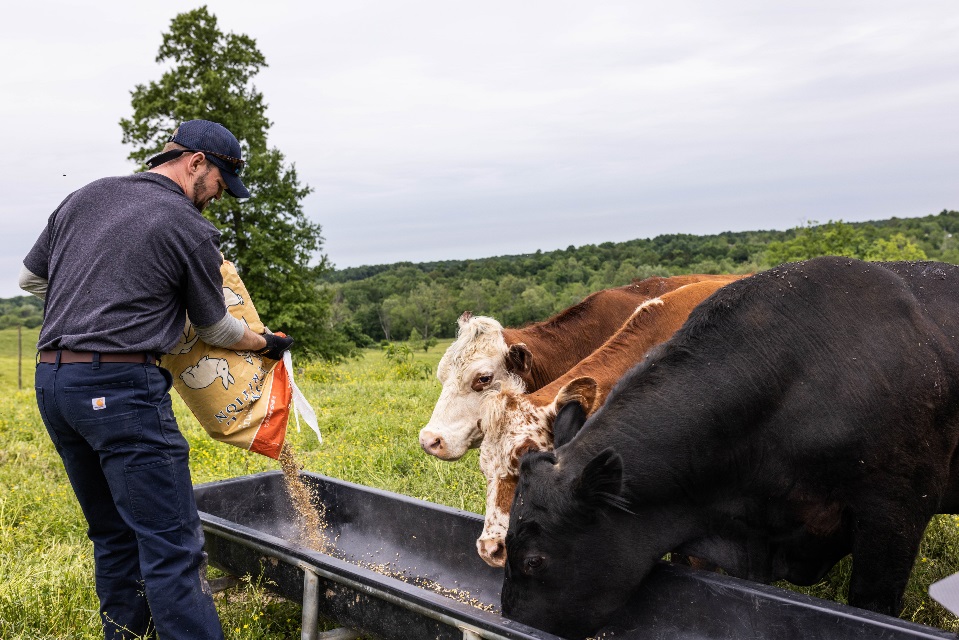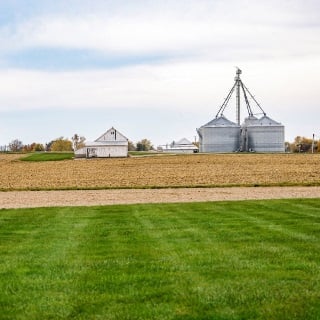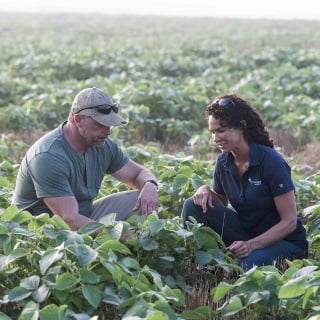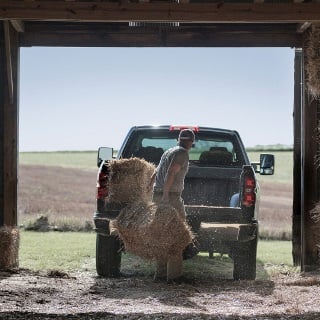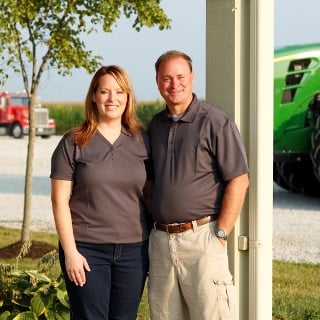By Ed Snodgrass | Senior Financial Officer, Farm Credit Mid-America
“Agriculture is our wisest pursuit, because it will in the end contribute most to real wealth, good morals and happiness.” —Thomas Jefferson
Many wise Americans, from poets to presidents, have praised farming as a noble calling. It’s a rewarding endeavor, to be sure, but it certainly isn’t easy.
That’s especially true for the cattle industry — and young producers, in particular, face a unique set of challenges. Below I’ll outline some of the difficulties emerging cattle producers face, along with strategies to achieve success.
First, the challenges
The first and most notable challenge up-and-coming cattle ranchers tend to encounter is securing the necessary capital to make their dream a reality. That’s especially true for more conventionally-minded operators or those with limited business experience.
And though farmers are accustomed to working hard, beginning cattle farmers must go above and beyond in the early stages of a new operation. Oftentimes, they’ll need to work a second job, off the farm, until the cattle operation gains traction.
Another common challenge is access to land. The reality for most young producers (and even some seasoned producers) is that they can’t afford to buy the land they are using. As a result, many decide to lease, which is a responsible approach if purchasing is not yet feasible or simply isn’t a good investment.
In addition to these obstacles unique to industry newcomers, there’s also the enduring challenge that all cattle producers face: ensuring profitability.
Tips to turning a profit, weathering storms
Those new to building a cattle operation will quickly learn that simply “producing” cattle doesn’t lead to profitability. It’s crucial from the outset to have a sound business plan that considers all phases of growth and potential roadblocks — along with a willingness to pivot and adapt to the changing agriculture industry.
Even the most successful cattle producers won’t reach their full potential unless they prioritize risk management.
There’s so much uncertainty in agriculture — from unpredictable weather conditions to ever-changing policies and markets — that it’s essential to manage risk whenever possible. And managing financial risk is of the utmost importance.
Simply weathering the ups and downs of the market is not a solid strategy, especially if the goal is to grow an operation. To that end, it’s important to avoid excessive debt, otherwise lenders may end up making key decisions about an operation.
Of course, no risk management conversation would be complete without talking insurance. One option worth weighing is Livestock Risk Protection, a plan that offers protection from adverse price changes in the livestock market and will help a producer recoup borrowed money back for their cattle. LRP policies may also cover additional costs so operations will sustain, even in the midst of a tumultuous market.
Another useful risk management tool to consider is a Pasture, Rangeland, Forage policy, which covers risk related to precipitation (or lack thereof) and its impact on acreage used for grazing livestock.
Throughout my career, I’ve seen firsthand how both types of policies can mean the difference between success and failure when unforeseen obstacles arise.
Aside from insurance, establishing a sound marketing plan is a necessity. This starts with gathering and analyzing reliable market data, then leveraging that useful information to build a marketing strategy that adds value. Ultimately, this will translate to liquidity and equity to ride out any storms.
Resources for young farmers
Now that I’ve outlined a few of the cattle industry’s risks and roadblocks, let’s review several of the many resources available to help emerging young farmers succeed.
First, don’t overlook the tried-and-true method of learning from a mentor. Find a successful operator — then watch, learn and don’t be afraid to ask for advice.
And while mentorship is indispensable, there’s a wealth of useful industry information to be found via online resources. There are countless options, but a couple of my preferred resources include Ranch Management Consultants, which offers a blog and various workshops (including one for young farmers), along with the phenomenal book Thoughts and Advice from an Old Cattleman by Gordon Hazard.
Ag-industry professionals also serve as a fountain of knowledge. It’s important to find a lender who is willing to be in it for the long haul, and who seeks to understand a client’s goals and help them make sound financial decisions to get there; and to build relationships with crop insurance agents and futures brokers who will help with risk management and marketing strategies.
Finally, don’t overlook the plethora of programs designed specifically for young farmers, which many lenders offer. They often include special underwriting standards designed specifically to support young and beginning producers.
For those who go on to become veteran producers, there’s ample assistance at those stages, too. The Farm Service Agency, for example, offers programs to reward good farming practices and offer assistance during emergencies or extreme weather, in addition to its lending arm. The Natural Resource Conservation Service is another resource to help producers in all phases run a more efficient and sustainable operation with an eye toward environmental stewardship.
Above all else, I want to encourage young or beginning farmers to look beyond production, as that’s only one element of a successful operation. Look at the big picture and take strategic steps to build up the capital and equity needed not only to endure — but to thrive.
About the author: Ed Snodgrass has worked at Farm Credit Mid-America for 27 years, first as a financial officer and now as a senior financial officer. He’s based in Greeneville, Tennessee, where he also runs a beef cattle operation with several partners. Ed graduated from the University of Tennessee in Knoxville with a degree in ag economics.

